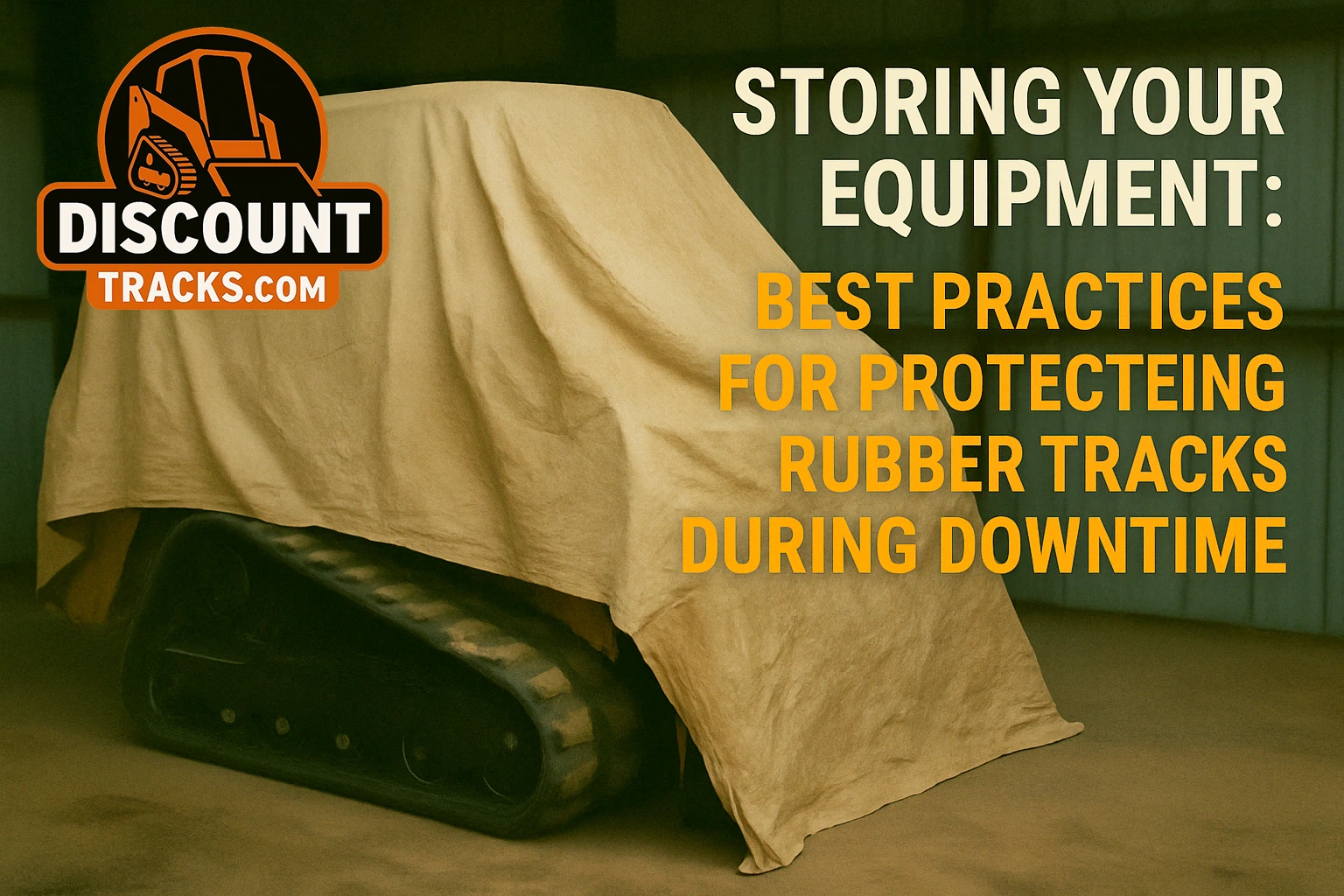Introduction
Whether it’s the off-season or just a break between projects, properly storing your equipment is essential — and your rubber tracks require special attention.
Neglecting rubber track storage can lead to avoidable problems like cracking, flat spots, UV degradation, and accelerated wear. These issues don’t just shorten track life — they cost you time and money when it’s time to get back to work.
This guide walks you through best practices for storing rubber tracks both on and off your machine. These simple steps help you protect rubber tracks during downtime, keeping them in optimal condition and ready to perform when you are.
Why Proper Storage is Critical for Track Longevity
Rubber tracks face several risks when machines sit idle:
- UV Degradation: Direct sunlight breaks down rubber compounds, causing cracks and surface drying.
- Ozone Exposure: Ozone from electric equipment can lead to fine surface cracks.
- Temperature Extremes: Freezing cold and extreme heat both accelerate rubber aging and reduce flexibility.
- Flat Spotting & Kinking: Stationary tracks can deform if improperly stored or supported.
- Moisture & Corrosion: Wet conditions can promote internal steel cord corrosion and damage undercarriage parts.
- Rodents & Pests: Unprotected storage areas may attract rodents that chew on rubber components.
Proper storage directly combats these threats — preserving track strength and flexibility over the long haul.
Best Practices for Storing Tracks ON the Machine (Long-Term Parking)
Most commonly, machines are stored with the tracks still mounted. Here’s how to do it right:
Tip 1: Clean Tracks & Undercarriage Thoroughly
Why: Trapped mud, gravel, and organic debris hold moisture and cause abrasion.
How: Pressure wash all track surfaces and undercarriage components (rollers, idlers, sprockets), then let them dry fully before parking.
Tip 2: Choose the Right Storage Location
- Best: Indoors in a cool, dry shed or garage.
- If Outdoors: Park on a dry surface (like wood planks or concrete), cover with a UV-resistant tarp, and allow airflow to prevent moisture build-up.
Tip 3: Consider Track Tension (Check Your Manual!)
Long-term tensioning needs vary by manufacturer. Some recommend slightly loosening the track to reduce stress.
Important: Always follow your operator’s manual for exact track storage tension guidelines. Never guess.
Tip 4: Support the Track or Rotate Occasionally
- Use boards or blocks to reduce ground pressure where tracks rest.
- If practical, move the machine slightly every few weeks to prevent flat spots and lubricate undercarriage components.
Best Practices for Storing Tracks OFF the Machine (Spare or Removed Tracks)
Whether you’ve replaced tracks or are storing extras, proper storage off the machine is just as important.
Tip 1: Clean and Dry Completely
Use a pressure washer and allow tracks to fully dry before storing to prevent moisture-related damage.
Tip 2: Store in an Ideal Environment
Keep spare tracks:
- Indoors
- In a cool, dry, dark location
- Away from ozone sources (like electric motors or welding areas)
Tip 3: Store Flat or Properly Supported Upright – Never Hang or Fold
- Flat: Lay tracks on pallets or rubber mats — not directly on concrete.
- Stacking: Use cardboard or wood separators; limit to 2-3 high.
- Upright: Store only if fully supported around the circumference.
- Avoid: Hanging tracks or folding tightly, which damages the internal cords.
Tip 4: Protect from Pests
Choose storage areas that are clean and pest-resistant to prevent rodent damage.
Start with Quality, Store with Care
High-quality tracks — like those from Discount Tracks — are designed with UV- and ozone-resistant compounds, reinforced steel cords, and long-lasting materials. But even the best tracks require proper care.
By following smart rubber track storage tips, you preserve that built-in durability, ensuring your tracks last longer and perform better when it counts.
Conclusion
Proper long-term track storage is simple, but essential.
Clean, dry, covered, supported, and tensioned correctly — these small steps make a big difference in preserving your rubber tracks during downtime. Whether you’re storing tracks for winter, summer, or between jobs, taking action now means less expense and downtime later.
Don’t let storage shorten your track lifespan! Protect your investment with these tips. And when you’re ready for high-performance replacements built to last — even through storage — Discount Tracks has your back.
👉 Explore our track selection or talk to our experts today!


